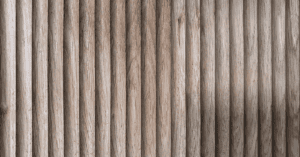Comparing teak oil vs Danish oil can be challenging because of their similar formulas. As an owner and appreciator of wood furniture design, I know how important it is to apply finishing oil to preserve the hardwood. But with so many finishes available today, it can be confusing to choose the right one.
While there are several types of wood oils, this article focuses on two of the most popular wood finishes—teak and Danish oils—to keep things simple. I explain their formulations, plus offer pros and cons of each. I also compare how they perform in different categories to help you decide which is best for your application.
Continue reading to learn the differences between teak oil and Danish oil.
What Is Wood Oil?
Before jumping into the detailed comparison of teak and Danish oil, let us first take a look at wood oils in general.
Wooden furniture is typically durable and generally requires little maintenance. However, it is still susceptible to moisture damage, cracking, and weathering over time.
Wood oil is among the effective ways to treat timber furnishings. It can enhance the wood grain appearance and at the same time seal the surface to prevent damage from the factors mentioned above.
There are many different types of wood oils. But this article will only address teak and Danish oil, both of which comprise a mix of ingredients.
Teak Oil vs Danish Oil: Formulation
It is essential to understand the formulas of teak oil and Danish oil before comparing them. Below is an overview of these wood finishes.
What Is Teak Oil?
You might think teak oil comes from teak trees. However, in some cases it is far from the truth.
Yes, some products contain pure teak oil. However, most store-bought teak oils only use a tiny amount of this lubricant. Instead, they primarily combine solvents and oils, such as pure tung oil and boiled linseed oil. The blend of these ingredients serves many applications.
First, it offers a protective layer that can resist water stains and UV rays. Thus, it is suitable for both interior and exterior wood surfaces.
This wood oil can also enhance the teak wood grain. It slows down the weathering process, ultimately preventing a faded appearance.
Finally, it acts as a varnish to help beautify wooden furniture pieces.
Pros and Cons of Teak Oil
Using teak oil to seal your wooden furniture has many benefits and a few drawbacks. I have included them below. Just make sure to stick with one of the best teak oil brands.
Pros:
- It creates a protective layer against moisture, sunlight, and other weather elements
- It prevents teak wood and other hardwoods from graying and staining
- A satin wood finish
- It can restore the original beauty of natural wood
- One of the most versatile wood oils
Cons:
- Ingredients can vary, but they are mostly toxic
- The oil is not food-safe
- It tends to darken the wood
How to Apply Teak Oil?
Using teak oil is relatively straightforward.
First, prepare the wooden surface for oil application. Ensure to remove any kind of debris stuck on the wood grain. You can do this by wiping with a microfiber cloth or using a soft-bristled brush. You might also want to check if there is an existing wood finish. It is essential to remove the outer layer to prevent interfering with the teak oil.
Next, use fine-grit sandpaper to smoothen exterior wooden surfaces. Rub following the direction of the wood grain.
Once the wood is polished, apply a liberal amount of teak oil with a brush. Wait for the lubricant to dry for around 30 minutes.
Then, put the second layer of teak oil. Leave this treated area for 15 minutes to let the wood oil absorb.
Finally, wipe off any excess oil and allow the exterior wood to dry overnight.
What Is Danish Oil?
Danish oil is similar to teak oil because it uses a blend of ingredients. It also comprises polymerized linseed oil and tung oil. These components dry to a hard finish to prepare the surface for varnish or paint. They can also help seal the wood against water, dust, and UV rays.
Additionally, Danish oil uses mineral spirits and synthetic resins. A few products might even contain rosewood oil. These ingredients deliver a shiny finish to any wooden surface.
However, it is often difficult to tell the exact formula of Danish oil. The mixture and ratio of components can vary a lot from one brand to another.
Pros and Cons of Danish Oil
Below are the advantages and disadvantages of using Danish oil to seal wooden surfaces.
Pros:
- It provides chemical, water, and scratch resistance
- This wood oil acts as a primer for paint or varnish
- Easy application
- It improves the sheen of wood furniture pieces
- Depending on the formulation, it can be less toxic than teak oil products
Cons:
- Less durable than other wood oils
- It requires regular maintenance
- It is exclusive to bare wood application
How to Apply Danish Oil?
Danish oil does not require special application methods. Hence, it is relatively easy to apply.
You only need a brush or clean cloth to apply the Danish oil over bare wood surfaces. Use gentle strokes or wipes following the grain direction. Doing so will allow the oil to penetrate the wood and yield better results.
Leave the surface to dry for around 15 minutes. Then, apply the second coat of oil until you achieve an even sheen.
Repeat the steps above when putting the third coat on outdoor wood furniture.
Finally, let the wooden surface dry completely. Depending on your Danish oil product, this will take around six to 12 hours.
Teak Oil vs. Danish Oil: Head-to-Head Comparison
By now, you already know the formulations of teak oil and Danish oil. It is clear that they share some ingredients and properties, like boiled linseed oil and pure tung oil. So, how do you exactly compare them?
Fret not! Below, I will weigh teak oil against Danish oil across various categories. I will also conclude the winner of the Danish oil vs. teak oil battle at the end of each section.
Protective Quality
Teak oil provides a hard protective layer on the wooden surface. It can effectively resist moisture and UV rays. Thus, it can slow down the natural graying process of wood.
On the other hand, Danish oil creates a watertight seal on the wood grain to prevent moisture damage. It can also protect the surface against harsh chemicals, sunlight, stains, and scratches. Therefore, it can keep your wooden furniture or decking beautiful for years to come.
As you can tell, both teak and Danish oil protect wood surfaces from various elements. However, the latter leaves a more durable coating.
Verdict: Danish oil wins
Appearance
Teak oil has a golden color that works well with teak and other hardwoods. It dries to a satin finish, which leaves a slight sheen on the wooden surface. It can also restore the natural beauty of old or weathered wood.
However, on their own, teak oil products can darken over time. Another downside is their attraction to mold when used outside.
In contrast, Danish oil gives a dark color and slight gloss. It can enhance the appearance of the wood grain. Meanwhile, the darker shade also introduces a unique look to the wooden surface.
Danish oil is a popular choice for rustic furniture pieces, such as wooden tables, chairs, and stools.
Ultimately, both products offer attractive wood finishes. Choosing between teak and Danish oil entirely depends on your preferences and existing interior design.
Verdict: A tie
Drying Time
Teak oil dries quickly compared to pure tung oil and linseed oil. It allows you to apply a second or third coating as soon as 15 to 30 minutes. However, it takes around eight hours or more to become completely dry and cured.
Danish oil offers a fast drying time of four to six hours. The exact duration depends on the outside temperature and humidity. It also accepts another layer of oil within several minutes. The only downside is it can take weeks to cure and dry underneath the wood surface.
Overall, choose teak oil if you want a fast-drying wood finish.
Verdict: Teak oil wins
Uses
Both teak oil and Danish oil are versatile.
Teak oil is a popular wood finish for indoor and outdoor furniture. It can also protect boats, decking, and flooring from harsh outdoor elements.
Meanwhile, Danish oil has more applications around the home. It is suitable for teak wood furniture pieces, cabinetry, paneling, and tools. Furthermore, it can act as a primer or sealer for bare wooden surfaces. It is compatible with oil-based paints once completely dry.
Verdict: Danish oil wins
Price
Teak oil and Danish oils are neck and neck in pricing. However, this fact is not as surprising because both wood finishes have similar formulas.
Prepare to spend between $20 and $25 for 32 fluid ounces of teak and Danish oil.
Verdict: A tie
Frequently Asked Questions
Is teak oil the same as Danish oil?
Many homeowners think that teak is the same as Danish oil due to their blended formulas. However, they have significant differences.
First, let us look at their ingredients. Teak oil uses pure linseed oil, tung oil, and chemical solvents. In contrast, Danish finishing products combine polymerized linseed and tung oil with rosewood oil, mineral spirits, and synthetic resins. The exact components vary from one brand to another.
They also have contrasting external appearances. Teak oil has a distinct golden shade with a slight sheen. Its color can last long but tends to darken over time. Meanwhile, Danish oil provides a darker and slightly glossier finish that requires regular maintenance.
Furthermore, teak oil offers a faster drying and curing time than Danish oil. Thus, it instantly penetrates and protects wooden surfaces.
Finally, teak finishing products can protect outdoor furniture, decking, flooring, and boats. Danish oil can do more than seal various wooden surfaces against water, heat, and chemicals. It can also prime bare wood for paint and varnish.
Can you put Danish oil over teak oil?
You can apply Danish oil to wooden surfaces treated with teak oil. The reason is they have the same chemical composition. Thus, Danish oil can adhere to teak oil to give you a more glossy finish.
However, you might want to leave the teak oil alone for several days. Doing so allows the oil to dry completely before you add another layer of lubricant.
And as we mentioned earlier, Danish oil works better as a primer or base coat than a top coat. It is also more suitable for bare and sanded wood pieces.
Can you mix teak oil and Danish oil?
I wish there was an easier answer to this one. If you read the rest of the article, you know that there are some similarities between teak oil and Danish oil, but given all the different formulations and potential chemicals added, I just can’t generally recommend mixing them (as in, stirring them together in a mix before applying to the wood).
If you are trying to get the properties of both oils, I would recommend applying them in separate layers with plenty of time to dry and cure in between.
What is the best oil for outdoor furniture?
Outdoor wooden furniture pieces are constantly exposed to rain, sunlight, wind, and other harsh elements. It is best to choose an oil-finishing product that protects against these damaging conditions.
Fortunately, you cannot go wrong with either Danish or teak oil.
Both products create a watertight seal to prevent moisture from seeping into the wood grain. They prevent your outdoor furniture from twisting and warping.
Additionally, Danish and teak oils offer UV resistance. They protect the wooden surface from sunlight and heat.
Finally, both wood oils can effectively resist most stains and scratches. Hence, they can extend the lifespan of your wooden outdoor furniture.
Conclusion
It might be challenging to choose between two wood oils at first. After all, both products offer a similar blend of ingredients that protect against harsh elements. However, they are different in many ways, and the winner depends on your unique needs and preferences.
To reiterate, teak oil has a golden color with a slight sheen. It also offers a quick drying time. Therefore, it is a popular choice for outdoor furniture, boat deckings, and flooring. Meanwhile, Danish oil leaves a distinct dark brown shade on wood surfaces. It provides multiple uses around the home. Finally, it is a great alternative to wood primers and sealers.
See our picks for best teak oil for a natural finish.






